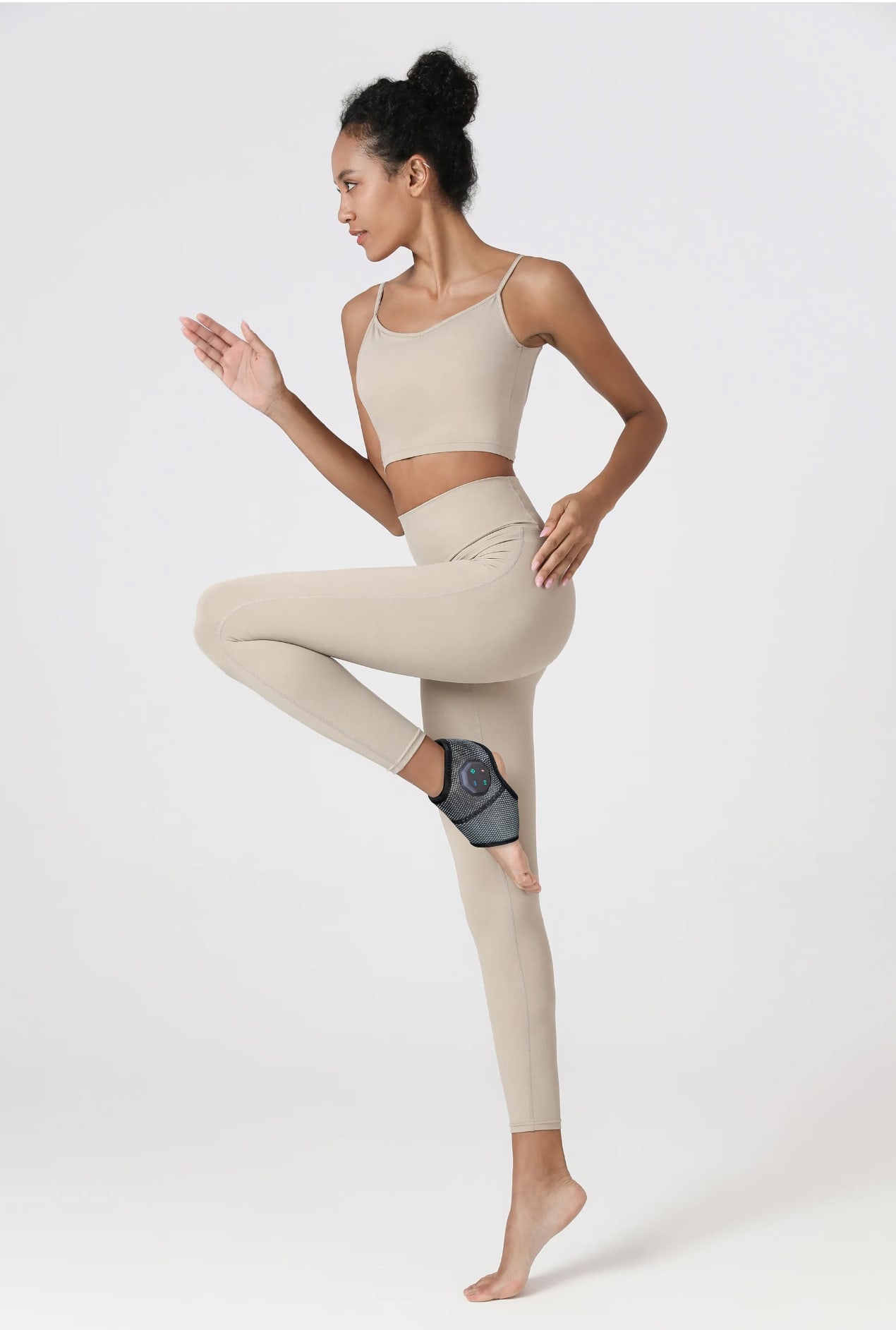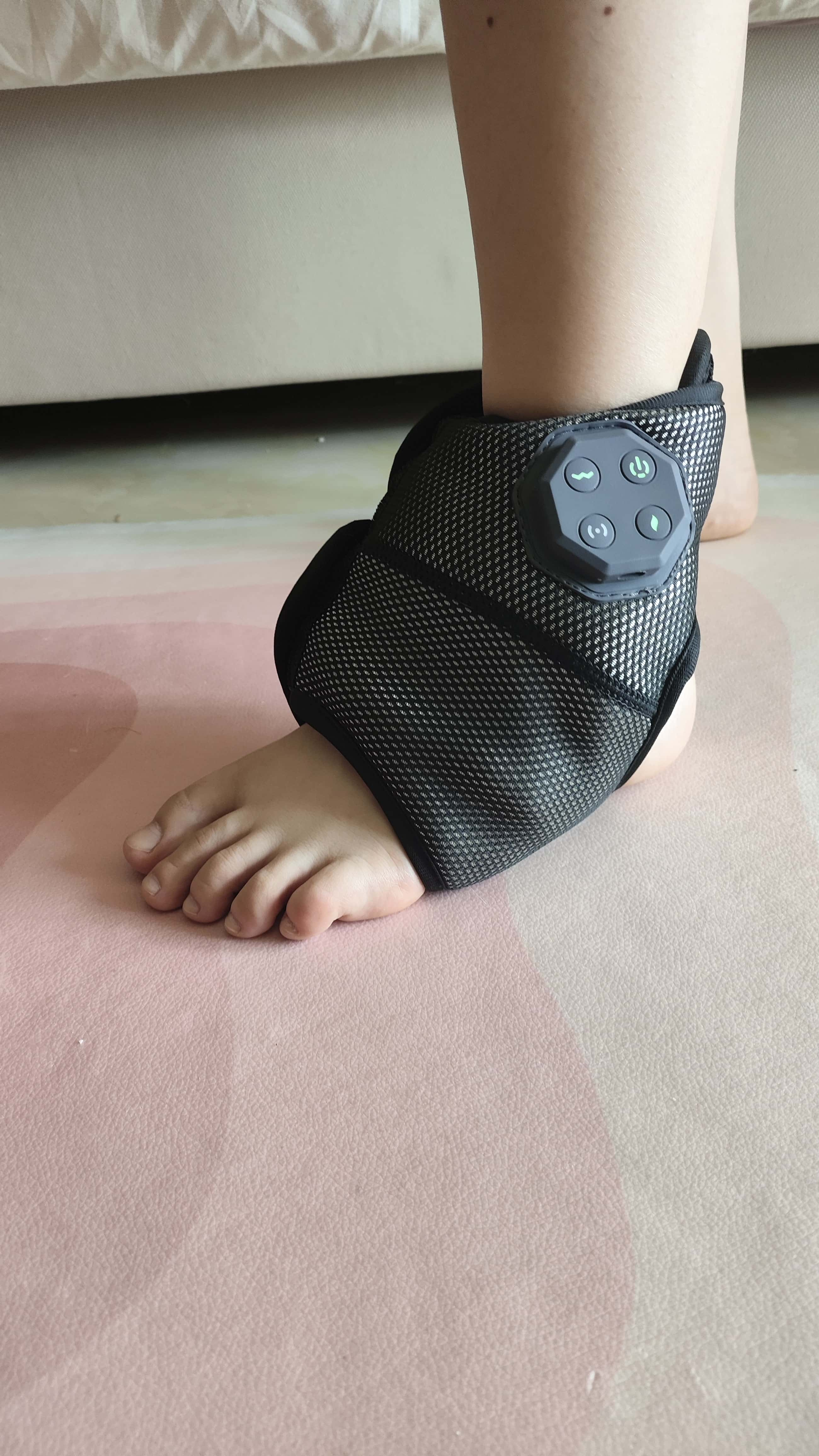Sprained Ankle? Ankle Massager for Faster Recovery
- By Grace
- Updated on
Sprained ankle can put a real damper on your day, can't it? From a misstep during a morning jog to an unexpected twist on uneven terrain, these injuries are incredibly common. Traditionally, rest, ice, compression, and elevation (R.I.C.E.) have been the go-to. But what if technology could offer a helping hand – or, more accurately, a therapeutic massage – to speed up your healing journey?
As a health coach, I often see people struggling with recovery, unsure of the best next steps. There's a common belief that massage is beneficial for a sprained ankle, and indeed, light massage can promote healing after the acute, initial swelling stage. However, it's also true that if the massage force is too strong, there is a risk of aggravating the injury. This is precisely where smart health solutions, like a targeted ankle massager, are truly reshaping how we approach rehabilitation.
Decoding Smart Recovery: What You Need to Know About Ankle Massagers.
The landscape of health management is evolving rapidly, with smart technology playing an increasingly vital role. We're moving beyond simple wearables to sophisticated devices designed for specific therapeutic purposes. When it comes to musculoskeletal injuries like a sprained ankle, this new wave of smart health offers precision and controlled interventions that traditional methods sometimes lack.
Think about it: how do you ensure consistent, optimal pressure with manual massage? It's tricky, right? This is where an advanced ankle massager steps in. These devices offer a disruptive approach, allowing for targeted relief and fostering an environment conducive to healing. They often incorporate features like controlled compression, heat therapy, and varied massage techniques, aiming to enhance circulation and reduce inflammation. For instance, many designs support effective compression legs recovery, which is vital for reducing swelling and promoting lymphatic drainage.
- Precision Therapy: Smart ankle massagers deliver consistent, targeted pressure to specific areas, unlike manual massage which can be inconsistent and fatiguing for the therapist.This precision is vital for effective soft tissue mobilization.
- Multimodal Approach: Many combine massage with heat, vibration, red light and air compression, offering a more holistic recovery experience. This integrated approach can address multiple facets of recovery simultaneously.

- User Control: Adjustable settings empower you to tailor the intensity to your comfort and stage of recovery, mitigating the risk of re-injury. This customization means the device adapts as your ankle heals, providing appropriate levels of therapy.
- Data Insights: Some advanced models might even provide feedback on usage patterns, helping you track your progress or identify areas needing more attention. This data-driven approach can optimize your rehabilitation plan.
The benefits extend beyond the immediate relief. By consistently applying controlled therapy, these devices aid in preventing chronic issues that can arise from improperly healed sprains. An ankle massager isn't just about feeling better; it's about healing better, too. It integrates seamlessly into a recovery plan that often includes rest, ice, and elevation, offering a complementary active recovery component that was previously difficult to achieve at home.
How to Maximize Your Ankle Massager for Optimal Recovery.
Using an ankle massager isn't just about turning it on; it's about understanding how it works to support your body's natural healing process. Many users, like myself, have found immense relief and accelerated recovery by properly integrating these tools into their routine. As a health coach, I want to equips you with the knowledge to make informed decisions and ensure safe, effective usage.
How It Works: Smart Tools Serving Your Recovery.
At their core, most ankle massagers operate on principles that promote circulation, reduce swelling, and alleviate muscle tension. They typically employ mechanisms such as targeted air compression, heat and red light, and therapeutic vibration. The compression element, often achieved through inflatable air bladders, mimics the benefits of professional leg recovery compression. This gentle, rhythmic pressure helps to push excess fluid and inflammatory byproducts away from the injured area, significantly reducing swelling and pain. This increased blood flow is crucial for delivering oxygen and essential nutrients to the damaged tissues, facilitating faster and more efficient cellular repair.
Additionally, the controlled massage action can help prevent excessive scar tissue formation and improve the flexibility of the joint over time, especially after the initial acute phase has passed. For example, some models use oscillating vibrations to stimulate the muscles and nerves around the ankle, which can significantly help with pain perception and muscle relaxation. The precise movements of an ankle massager can also help to restore range of motion, which is often limited after a sprain. Have you ever wondered how those fancy gadgets really help? It's this intelligent combination of physical therapies that makes them so effective for accelerating healing. [Data needed: Specific improvements in recovery time or pain reduction with consistent use compared to R.I.C.E. alone. Source: [Relevant Clinical Study Year]]
Real-World Advantages: Enhancing Your Healing Journey.
The real beauty of an ankle massager lies in its practical advantages for everyday use, transforming a tedious recovery into a more manageable and often enjoyable process. Unlike relying solely on a physical therapist for manual massage, a home device offers on-demand, consistent therapy whenever you need it. This convenience means you're far more likely to stick to a regular recovery schedule, which is paramount for effective healing and preventing re-injury. Many users report profound relief and a sense of empowerment from having such a tool readily available.
Furthermore, the controlled intensity settings address the critical concern of aggravating an injury with too much force, a risk often associated with inexperienced manual massage. With a quality ankle massager, you can gradually increase the intensity as your ankle heals, ensuring safety and optimal therapeutic benefit. This prevents further strain on the injured ligaments and allows for a guided progression. It also perfectly complements other crucial recovery tools like an ankle brace for sprain, which provides vital stability during movement and protects the healing joint. Imagine combining the steady support of an excellent ankle brace for sprain with the targeted therapeutic action of a massager. This holistic and integrated approach can significantly enhance your healing journey and get you back on your feet with confidence, often reducing overall recovery time and improving long-term joint health. This synergy between support and active recovery is simply invaluable.
The Practical Guide to Integrating Ankle Massagers into Your Recovery.
Choosing the right ankle massager and knowing how to effectively integrate it into your daily routine is key to unlocking its full potential. As your health coach, I want to equip you with the knowledge to make informed decisions and ensure safe, effective usage. Remember, every sprain is unique, and personalized care is always best, so always listen to your body and your healthcare professional.
Here’s how to navigate your options and get started:
- Consult Your Healthcare Professional First: This is the absolute first step. Always discuss the use of an ankle massager with your doctor, physical therapist, or sports medicine specialist. They can confirm it's appropriate for your specific injury severity and advise on the best timing – typically after the acute inflammatory phase (usually 48-72 hours post-injury) where swelling is decreasing. Using it too early or with incorrect force can actually worsen the sprain or impede healing, so professional guidance is non-negotiable.
- Look for Adjustable Features and Versatility: A high-quality ankle massager should offer adjustable intensity settings for both massage and compression, allowing you to customize the experience as your pain subsides and your tolerance increases. Look for models with different massage modes (e.g., kneading, vibration, rolling) and the option for heat therapy, which can soothe muscles and increase localized blood flow. Devices that provide targeted compression legs recovery, using air chambers, are particularly effective for reducing edema.
- Prioritize Safety, Comfort, and Material Quality: Ensure the device fits comfortably and securely around your ankle without causing undue pressure points. Check for safety certifications and reliable brand reviews. The materials should be durable and easy to clean. If you experience any increased pain, numbness, tingling, or discomfort during use, stop immediately. Your comfort and safety should always be the priority.
- Integrate with R.I.C.E. and Progressive Movement: An ankle massager is a supplementary tool, not a replacement for the fundamental R.I.C.E. principles (Rest, Ice, Compression, Elevation). Continue these foundational steps as advised by your healthcare provider. As your ankle heals, gradually introduce gentle range-of-motion exercises and strengthening routines. Wearing an ankle brace for sprain during early ambulation or activity can provide crucial stability and prevent re-injury, creating a protective environment for your healing joint.
- Start Low, Go Slow, and Be Consistent: Begin with the lowest intensity setting and short durations (e.g., 10-15 minutes, once or twice daily). As your ankle feels better and stronger, you can gradually increase the duration and intensity. Consistency, rather than aggressive intensity, is the key to sustained therapeutic benefits. Regular, gentle sessions are far more effective than sporadic, high-intensity ones.
- Consider Complementary Therapies for Holistic Recovery: Beyond your ankle massager and ankle brace for sprain, think about other supportive measures. This includes a balanced, anti-inflammatory diet rich in nutrients for tissue repair, adequate hydration, and sufficient sleep. Mindfulness practices can also help manage the psychological impact of injury. A holistic approach to recovery will certainly help you regain full function and confidence in your ankle.
To be honest, achieving full recovery after a sprain requires patience, discipline, and a multi-faceted approach. A quality ankle massager can be a significant ally in this journey, offering targeted relief and promoting healing from the comfort of your home. Based on my experience, empowering yourself with the right tools and knowledge is key. For example, specific brands like Klcosy offer a range of specialized massage products designed to provide effective and controlled therapy for various recovery needs, including sprains. I encourage you to explore their performance and features to see if they align with your recovery goals and contribute to your overall well-being. Ultimately, investing in your recovery today means a healthier, more active tomorrow. This isn't just about fixing an injury; it's about fostering lifelong joint health.

Ready to Accelerate Your Ankle Sprain Recovery?
Embrace the power of smart health technology to enhance your healing process. Understanding how tools like the ankle massager work, and integrating them wisely, can make a significant difference in your recovery from a sprained ankle. Explore specialized recovery products, such as those from Klcosy, known for their performance in aiding rehabilitation and promoting leg recovery compression. Your journey to lasting comfort and restored mobility is within reach – take the first step towards a stronger, healthier you!
This reply is generated based on currently verifiable public information. It is recommended to cross-check key content with authoritative sources.




